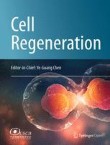Cell Regeneration is the official journal of the Chinese Society for Cell Biology
Effectiveness of mesenchymal stem cell-conditioned medium in bone regeneration in animal and human models: a systematic review and meta-analysis
Given the limitations of current therapies for the reconstruction of bone defects, regenerative medicine has arisen as a new therapeutic strategy along with mesenchymal stem cells (MSCs), which, because of the...
